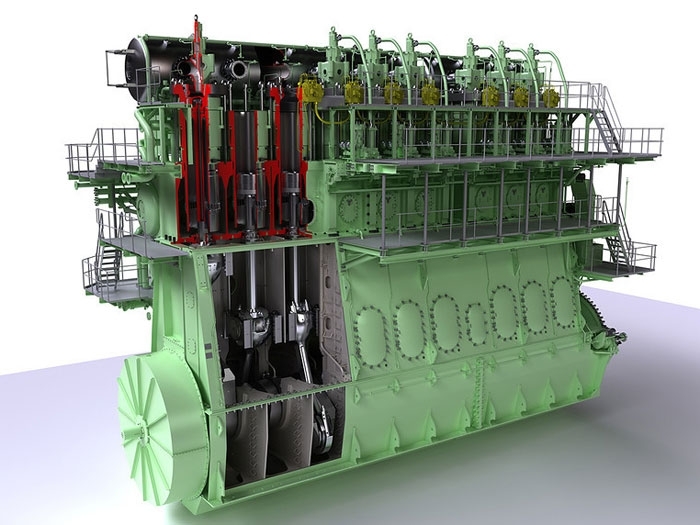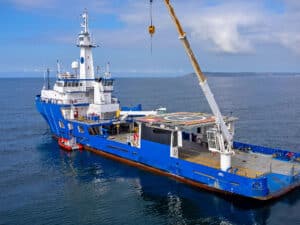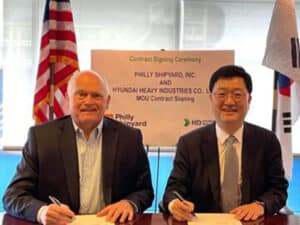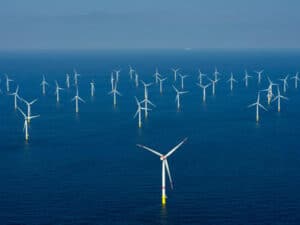
DNV GL carries out HAZID on methanol fueled newbuilds
Written by Nick Blenkey
The ME-LGI is the counterpart to the ME-GI pictured here
MAY 14, 2014 — DNV GL has conducted a risk assessment “hazard identification study (HAZID)” on a series of three 50,000 dwt methanol-fueled tankers that are building in Japan for charter to the Waterfront Shipping Company subsidiary of Methanex Corporation, Vancouver, B.C. The ships are being built at Minami Nippon Shipbuilding for Mitsui O.S.K. Lines and will be built with MAN ME-LGI flex fuel engines running on methanol, fuel oil, marine diesel oil, or gas oil.
The ships are being built to ClassNK class, but DNV GL was asked to participate in the project because of its expertise on low flash point fuel including methanol and LNG. Three sister vessels on order at Hyundai Mipo Dockyard in Korea for other owners for charter to Waterfront are being built to DNV GL class.
“We’re working closely with all parties to make design improvements and safety recommendations early in the design phase,” says Tetsuya Kamada, the country manager for DNV GL’s maritime advisory unit in Japan. “We have considered the structure and maintenance of the fuel system as well as the vessel’s voyaging, bunkering and cargo operations to ensure that the vessels will be as highly safe as conventional heavy-oil-fueled ships.”
“We are pleased to receive DNV GL’s HAZID support for this challenging project. DNV GL led and facilitated the suggestions and views of all the related parties and gave us effective guidance to consider so that we could make these unique vessels safe. We think that their guidance which is based on their proven and long-held knowledge and expertise is very effective,” appreciated by Mr. Satoshi Ikeda, Director of Minami Nippon Shipbuilding.
Methanol is a low SOx fuel that is gaining interest due to its availability, cost and technical feasibility. Methanol has many advantages as a fuel, but as is the case with all fuels, it also has hazards that must be managed, such as toxicity and flammability.
“Due to DNV GL’s contribution, uncertainties and risks have been specifically identified at this early phase,” says Mr. Kiyotaka Yoshida, Managing Executive Officer of Mitsui O.S.K. Lines. “We sincerely thank them for their support and expertise shown in identifying risks and hazards in the early design phase which we need to adhere to – and implement countermeasures against – in order to ensure safety.”
The new ships must meet the requirements of the IMO Interim Guideline MSC 285(86). DNV GL views that all safety considerations must be reassessed because using the methanol in a ship engine for propulsion is a new step forward for the maritime industry where people have long experience of handling the particular substance as cargo.
DNV GL has extensive experience of handling low flashpoint liquid cargos on chemical tankers and offshore supply vessels and 15 years’ experience of handling alternative fuels on gas-fueled ships. A year ago, DNV GL was the first class society to introduce rules for low flashpoint maritime fuel. It says that the HAZID process has proven to be very productive and will go towards building industry-wide expertise in this promising new fuel.





Leave a Reply
You must be logged in to post a comment.